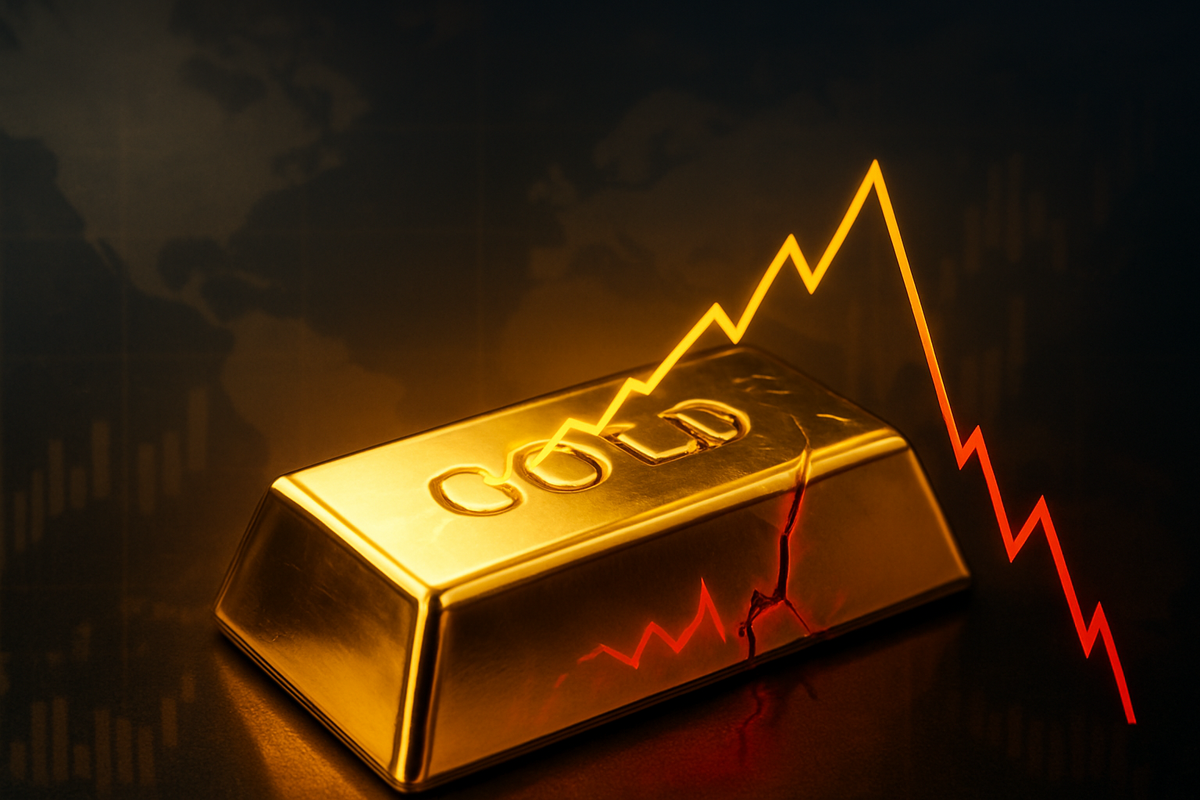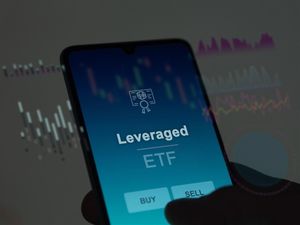
The global financial landscape is once again captivated by the volatile movements of gold (XAU/USD), as the precious metal recently surged to unprecedented highs before undergoing a sharp correction. This dramatic price action, culminating in a record peak of over $4,380 per ounce in mid-October 2025, has reignited debates among investors: is gold's meteoric rise a sustainable trend fueled by persistent global tensions, or has the XAU/USD finally topped out? The answer appears to lie in a complex interplay of geopolitical anxieties, economic uncertainties, and robust institutional demand, all conspiring to reinforce gold's enduring appeal as a safe-haven asset.
The recent rally, marking gold's strongest annual performance since 1979 with a staggering 54-60% year-to-date gain, reflects a profound shift in investor sentiment towards tangible assets amidst a backdrop of escalating risks. However, the subsequent "flash crash" saw prices plummet over 5% in a single day, leaving many questioning the metal's immediate trajectory. Despite this short-term turbulence, a deeper analysis reveals that while profit-taking and technical corrections are at play, the fundamental drivers supporting gold's long-term bullish outlook remain firmly intact, suggesting that this might be a consolidation phase rather than a definitive peak.
Unpacking Gold's October Odyssey: A Record Peak and a Swift Plunge
The gold market's journey in 2025 has been nothing short of spectacular. After consistently setting new all-time highs throughout the year and breaching the $4,000 per ounce mark in early October, XAU/USD reached an astonishing peak of approximately $4,381.44 per ounce on October 20 or 21, 2025. This historic milestone underscored gold's unparalleled strength and its growing role as a hedge against a turbulent world.
However, the celebratory mood was short-lived. Just a day later, on October 21, 2025, gold experienced a dramatic "flash crash," plummeting more than 5% in a single trading session. This marked its steepest fall in over five years and its largest one-day loss of the year, with prices dipping below $4,100 per ounce by October 22. As of October 23-24, 2025, XAU/USD is trading in a consolidation phase, generally ranging between $4,050 and $4,144 per ounce, as market participants digest the rapid ascent and subsequent correction. Key players like central banks, which have been consistent net buyers, and major financial institutions such as JPMorgan Research, HSBC, and Bank of America, which have issued bullish long-term forecasts, continue to influence market sentiment. The initial market reaction to the crash was a mix of profit-taking and a reassessment of short-term risks, but the underlying narrative of gold as a crucial safe haven persists.
Companies Riding the Gold Wave and Those Facing Headwinds
The extreme volatility and sustained high prices in the gold market have created a distinct landscape of winners and losers among public companies. Gold mining companies, in particular, stand to benefit significantly. Major players like Newmont Corporation (NYSE: NEM), Barrick Gold Corporation (NYSE: GOLD), and Agnico Eagle Mines Limited (NYSE: AEM) are seeing expanded revenues and profit margins as the value of their extracted gold surges while production costs remain relatively stable. Other notable miners such as Kinross Gold Corporation (NYSE: KGC) and Alamos Gold (NYSE: AGI) are also well-positioned. Royalty and streaming companies like Franco-Nevada Corporation (NYSE: FNV), Wheaton Precious Metals (NYSE: WPM), and Royal Gold (NASDAQ: RGLD) offer leverage to rising prices without the direct operational risks of mining, providing more predictable cash flows. Even smaller producers like TRX Gold Corporation (NYSE: TRX) have reported record production and sales, benefiting from higher realized gold prices.
Gold refiners, such as those within Elemetal, America's largest precious metals refiner, also experience increased demand for their services during heightened investor interest in gold bullion and coins. In the financial sector, gold-centric non-banking financial companies (NBFCs) like Muthoot Finance Ltd and Manappuram Finance Ltd in India are thriving. Rising gold prices increase the loanable value of pledged gold, boosting their assets under management (AUMs) and improving profitability, especially as traditional banks reduce their exposure to gold loans due to volatility.
Conversely, the jewelry sector often faces significant headwinds. Companies like Signet Jewelers Limited (NYSE: SIG), which operates brands such as Kay Jewelers and Zales, can see profit margins squeezed by increased raw material costs. Consumers, facing higher retail prices, may reduce purchase sizes or postpone buying, leading to dampened demand. Indian jewelers such as Titan Company Ltd., Kalyan Jewellers India Ltd., and Senco Gold Ltd. have reported lower sales growth or experienced stock plunges as high valuations met dampened consumer interest. Even luxury brands under LVMH (EPA: LVMH), including Tiffany & Co. and Bulgari, while possessing pricing power, are not entirely immune to pressure on gross margins from cumulative price increases. High-cost gold miners or those with inadequate hedging strategies, such as Harmony Gold (NYSE: HMY), are also vulnerable to sharp price corrections, as their shares can plunge dramatically. Gold-backed ETFs like SPDR Gold Trust (NYSE: GLD) and iShares Gold Trust (NYSE: IAU) provide investors direct exposure to gold price movements, rising with rallies and falling with corrections.
Wider Significance: A Global Barometer of Uncertainty
The current gold market volatility is not an isolated event but a significant indicator of broader industry trends and global uncertainties. Gold's rally throughout 2025 has been driven by persistent geopolitical tensions, including ongoing conflicts in the Middle East and Ukraine, resurfacing US-China trade tensions with discussions of new tariffs, and new US sanctions on Russian oil firms. These factors, threatening energy supplies and disrupting global trade, fuel inflation expectations and drive investors to safe havens.
A major underlying trend is the sustained and robust demand from central banks globally, which are actively diversifying their reserves away from the US dollar. This de-dollarization trend, amplified by events like the freezing of Russia's central bank assets in 2022, has seen central banks add over 1,500 tonnes to their reserves between 2023 and 2025, creating a durable price floor for gold. The ripple effects extend to other precious metals. While silver (XAG/USD) often tracks gold, its higher industrial usage makes it more sensitive to economic downturns, as evidenced by its 8% decline alongside gold's recent correction. Platinum (XPT/USD) and palladium (XPD/USD), primarily industrial metals for catalytic converters, also saw declines but platinum has shown a strong rally (40% in 2025) due to its emerging role in green energy technologies like hydrogen fuel cells.
Historically, gold has proven its mettle during times of crisis. The 1970s stagflation saw gold prices surge after the end of the Bretton Woods system. During the 2008 financial crisis, after an initial dip due to margin calls, gold rebounded strongly, acting as a protector of wealth. Similarly, the COVID-19 pandemic in 2020 triggered another "explosion" in gold prices as people sought security. The current environment, with its mix of geopolitical strife, economic instability (including fears of recession and stagflation), and central bank policy shifts (expectations of Federal Reserve rate cuts), echoes these historical precedents, reinforcing gold's role as a crucial hedge against systemic risks.
What Comes Next: Navigating Gold's Future Path
The immediate future for gold appears to be a period of consolidation, with short-term pressures potentially keeping prices range-bound. Factors such as a strengthening US dollar, any easing of US-China trade tensions, and profit-taking after the substantial rally could lead to further minor declines. However, the long-term outlook remains predominantly bullish. JPMorgan Research projects gold to average $3,675/oz by Q4 2025 and climb towards $4,000 by mid-2026, with some "tail-risk scenarios" suggesting potential highs between $6,000 and $9,000. HSBC anticipates gold reaching $5,000 per ounce in 2026, and Bank of America forecasts a peak of $6,000 per ounce by spring.
Strategic pivots for investors and companies will involve closely monitoring geopolitical developments, particularly in the Middle East and US-China relations, as well as upcoming US economic data, especially Consumer Price Index (CPI) figures, and Federal Reserve policy announcements regarding interest rates. Market opportunities may emerge in gold mining stocks, especially for efficient, low-cost producers, and in physically-backed gold ETFs like SPDR Gold Trust (NYSE: GLD) or iShares Gold Trust (NYSE: IAU) for investors seeking direct exposure. Challenges include managing volatility, potential for further short-term corrections, and the impact of a stronger dollar. Potential scenarios range from a continued, albeit slower, upward trajectory driven by persistent safe-haven demand, to more significant pullbacks if global tensions ease substantially or if the dollar strengthens considerably.
A Golden Conclusion: Resilience Amidst Uncertainty
The recent extreme volatility in the gold market, characterized by an unprecedented rally to record highs and a subsequent sharp correction, underscores its pivotal role as a global barometer of uncertainty. While the "flash crash" of October 2025 prompted questions about whether XAU/USD had topped, the consensus among analysts suggests it is more likely a period of profit-taking and consolidation within a larger, ongoing bullish trend. The fundamental drivers—persistent geopolitical tensions, fears of inflation and recession, and robust central bank demand—remain firmly in place, providing a strong foundation for gold's long-term appeal.
Moving forward, the gold market will continue to be influenced by the ebb and flow of global events. Investors should watch for further developments in international conflicts, shifts in US monetary policy, and the trajectory of the US dollar. The resilience of central bank demand, coupled with increasing investor inflows into gold-backed ETFs, highlights a sustained shift towards precious metals as a core component of diversified portfolios. Gold's significance as a lasting store of value and a hedge against systemic risks is undeniable, positioning it as a critical asset in the months and years to come, regardless of short-term fluctuations.
This content is intended for informational purposes only and is not financial advice






